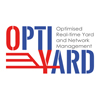OLTIS Group as One of the OptiYard Project partners

25.–26.10.2017
OptiYard (Optimised Real-time Yard and Network Management) is an international project the objective of which is, with regard to the European Union’s railway transport objectives promoted through Shift2Rail and Horizon 2020, to propose an optimization of marshalling yards, transit sheds and terminals, including the relations to surrounding railway networks.
The project will be attended by thirteen participants from seven European countries – Belgium, Czech Republic, France, Italy, Germany, Slovakia and Great Britain. When it comes to the Czech Republic, the project will be represented, alongside OLTIS Group, by the major Czech rail cargo carrier ČD Cargo. On 25 and 26 October 2017, SMC and TMC meetings and a kick-off meeting took place at UIC’s registered address with the participation of our representatives.
The processes at which the OptiYard program is targeted are those happening in real time and affecting the timely and efficient delivery of both individual rail shipments and comprehensive sets to the place of destination. The following acts are relevant within the project:
• To propose optimized junction management processes, including automation.
• To propose processes of mutual interaction among junctions and adjacent networks in real time.
• To model and simulate functional management processes in junctions and adjacent networks according to the proposal.
• To improve information and communication processes among infrastructure managers, carriers, transporters and other involved parties with the help of standardized messages compliant with TSI TAF.
• To develop and introduce software providing optimum decision-making support in real time for managing junction processes.
The fulfilment of the stated points will enable completely new access to the short-term planning of operation even in extraordinary events and traffic closures and will bring an overall optimization of the transportation processes of individual rail shipments, groups of vehicles and comprehensive sets with the use of newly developed software. The resultant effects will be the increased capacity and reliability and, therefore, enhanced competitiveness of rail transport, including customer satisfaction thanks to accurate and current information.